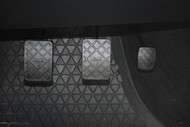How Does a Clutch Work?
12th Jun 2020

What is a Manual Clutch?
If you've ever stepped into the driver's seat of a vehicle with a manual transmission, you may recall seeing three pedals on the floorboard. Like their counterparts with an automatic transmission, they have a gas pedal and a brake pedal. However, manual transmission vehicles also have a third pedal, the clutch.
Overview of the Clutch
The clutch is an essential component in vehicles with a manual transmission. In its default state, the clutch connects the vehicle's engine to its gearbox. When you press the clutch pedal, this connection breaks so that you shift into a different gear or decelerate.
All manual transmission vehicles have a clutch. Consisting of a pedal, cables and other connectors, it joins the vehicle's engine to the gearbox. The clutch allows you to change gears by breaking this connection. If you want to change gears, you can simply press the clutch pedal. Doing so will disconnect your vehicle's engine from the gearbox, meaning your wheels won't continue to spin under the rotational power generated by the engine.
Common Clutch Problems
Clutches aren't immune to mechanical failure. If your vehicle's clutch is on its last leg, you may notice symptoms such as a burning smell originating from the tires, loss of power, a "sticking" or "loose" clutch pedal, or hard shifting. With that said, you shouldn't continue to drive if your vehicle has a bad clutch. The longer you drive with a bad clutch, the greater the risk of severe damage to your vehicle's gearbox -- and gearbox repairs aren't cheap.
What causes the clutch to fail exactly? As previously mentioned, clutches connect a vehicle's engine to its gearbox. Therefore, they contain cables or chains, which can break from regular usage. If a cable or chain in your vehicle's clutch system breaks, the clutch will fail to operate as intended.
Even if a cable or chain doesn't break, it may overstretch to the point where it manifests as a faulty clutch. Clutch cables and chains require a certain amount of tension to function properly. Over time, though, a cable or chain may lose some of its tension, resulting in a looser connection
Clutch problems can occur spontaneously or gradually. Regardless, if your vehicle has a faulty clutch, don't hesitate to repair it. Postponing a clutch repair will only increase the risk of more severe, as well as costly, damage to your vehicle.

